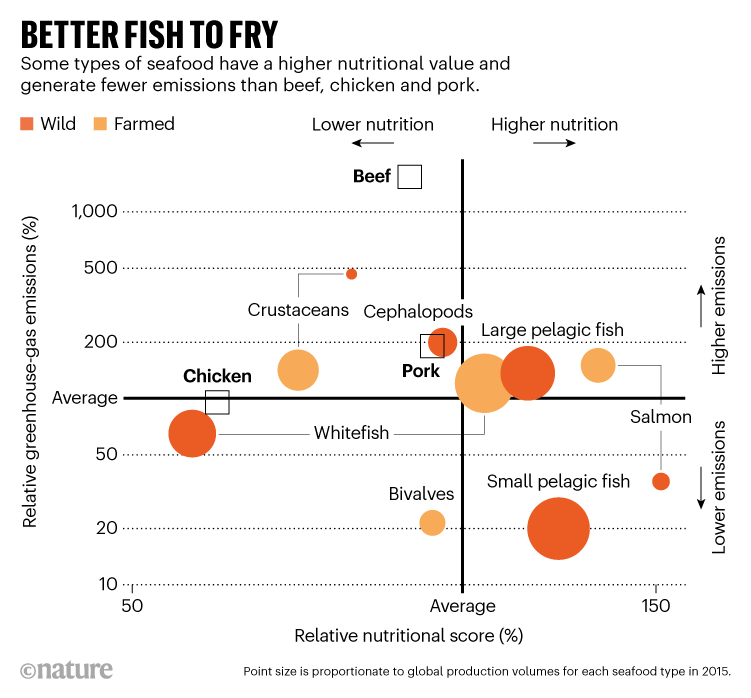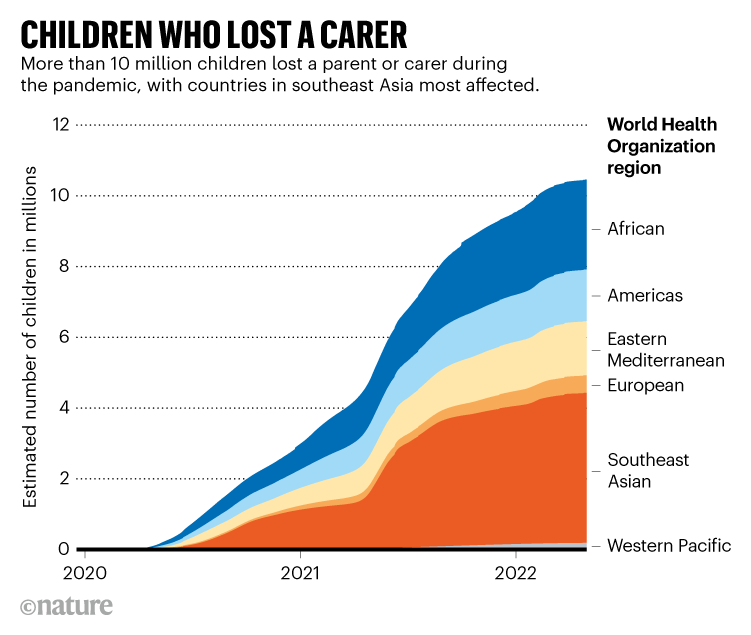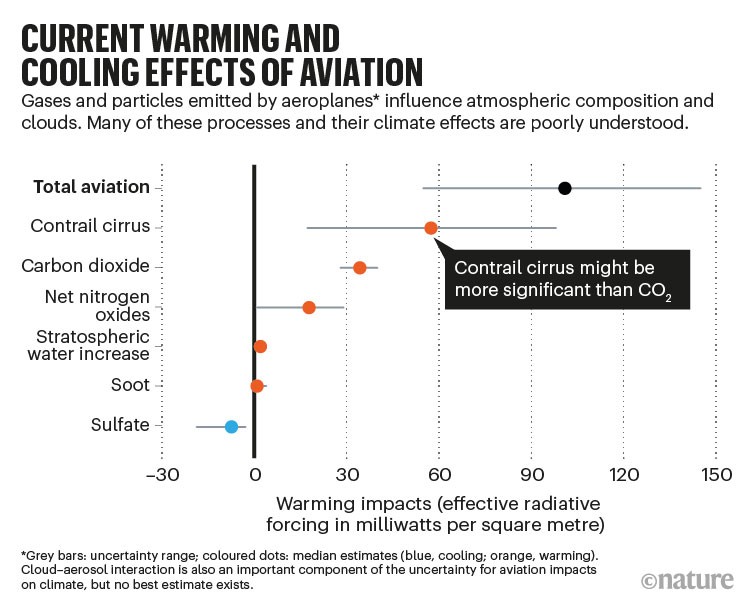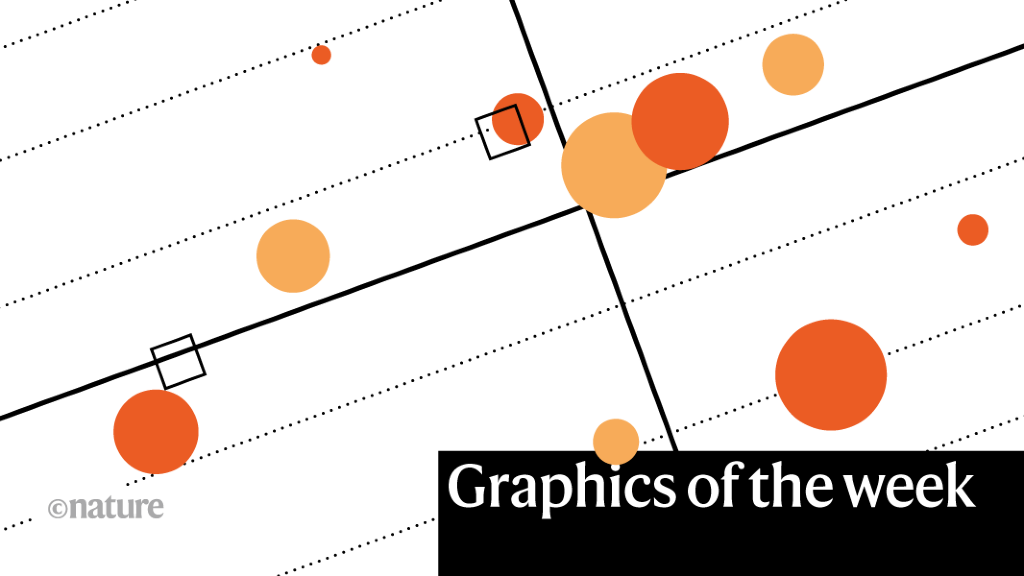Best fish for humans and Earth
This graphic shows which types of seafood are both nutritious and better for the planet than eating meat. Looking at 41 seafood species, researchers established a nutritional score that accounted for essential nutrients, such as certain fats and vitamins. They then compared the species’ nutrient density with the greenhouse-gas emissions associated with their production or capture.
The study suggests that farmed bivalves — shellfish such as mussels, clams and oysters — and wild-caught, small, surface-dwelling (pelagic) fish, which include anchovies, mackerel and herring, generate fewer greenhouse-gas emissions and are more nutrient-dense than beef, pork or chicken.

Source: M. Bianchi et al. Commun. Earth Environ. 3, 188 (2022)
Children who lost a carer
A study estimates that 10.5 million children have a parent or carer who died from COVID-19, another devastating reminder of the pandemic’s toll. The figure is a dramatic increase on earlier estimates. India, Indonesia and Egypt were the countries most affected; other regions throughout Africa and southeast Asia were also badly hit. This number is on top of the 140 million children who were already orphans before the pandemic.

Credit: S. Hillis et al. JAMA Pediatr. https://doi.org/10.1001/jamapediatrics.2022.3157 (2022)
How aeroplanes affect the atmosphere
The aviation industry generates roughly one billion tonnes of carbon dioxide per year — comparable to the emissions produced by Japan, the world’s third-largest economy. This graphic shows the many ways in which aeroplanes affect the atmosphere.
Aircraft engines burn fossil fuels, releasing CO2, a gas that contributes to global warming. But high temperatures in engines also produce other greenhouse gases called nitrogen oxides, and the engines release aerosols that alter the composition of the atmosphere. Burning hydrocarbons generates water vapour; when this mingles with aerosols, it produces vapour trails, also known as contrails.
The biggest wild card concerns cloud formation. Some simulations warn that ‘contrail cirrus’ might have caused almost twice as much warming as CO2 from the aviation sector up to 2018. All this means that solutions might need to go well beyond clean fuels, as this Comment article explains.

